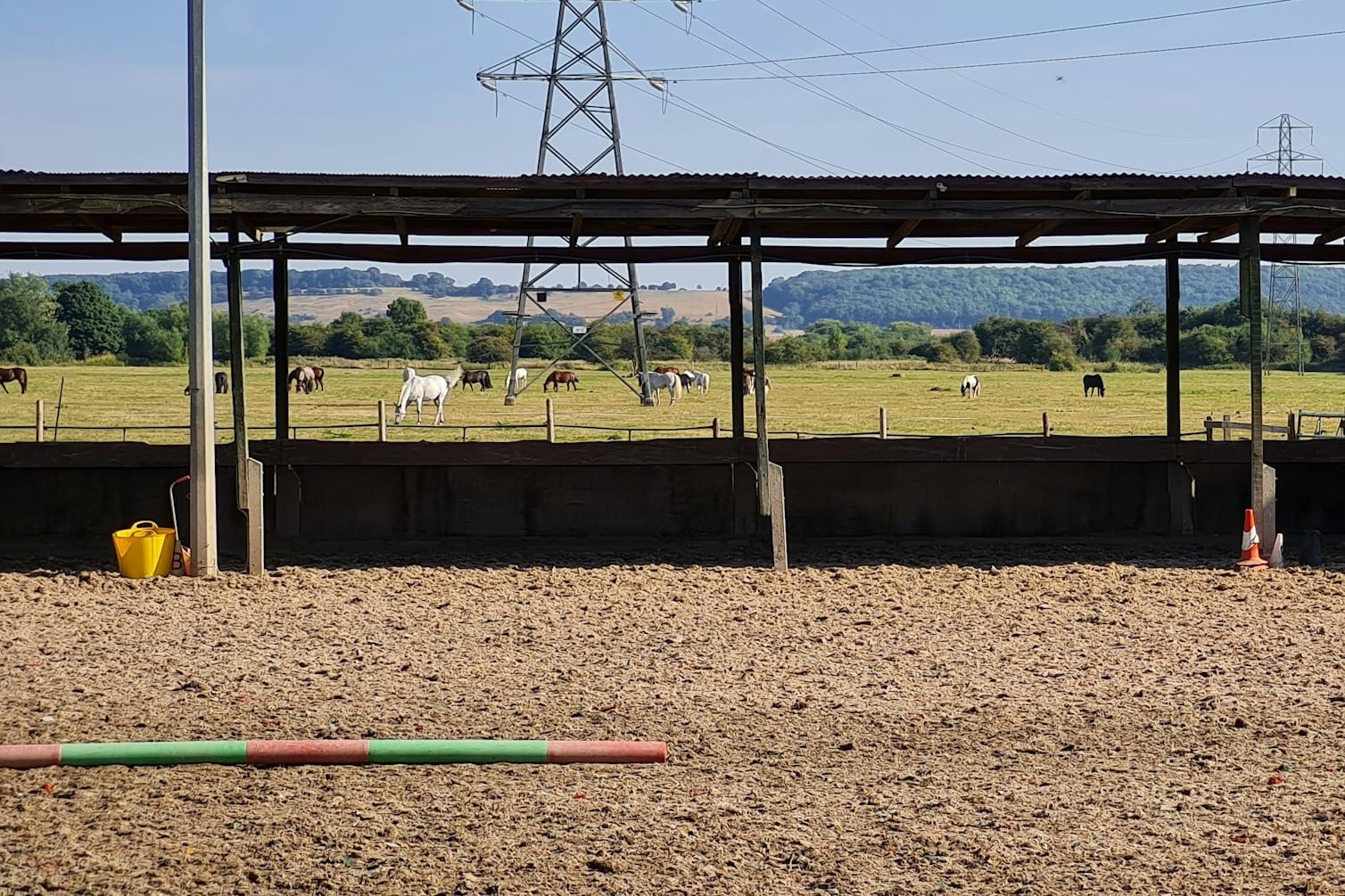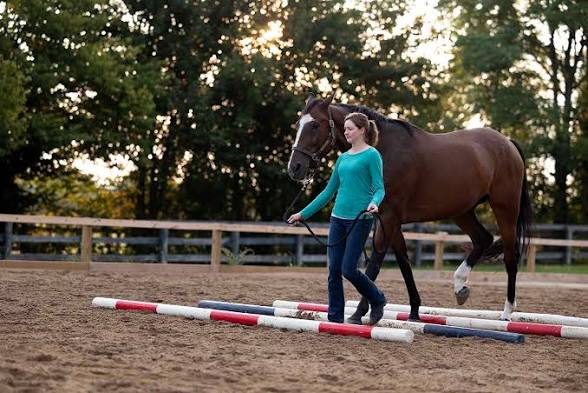Fun Ground Work Activities to Do with Your Horse
Can’t ride today? No problem. Groundwork builds trust, improves communication, and keeps your horse mentally and physically engaged. Try these fun, feel-good exercises to deepen your bond and give your horse something new to think about.

As equestrians we all know that riding your horse is amazing, but there’s magic in what happens on the ground, too. Groundwork with your horse can deepen your partnership, sharpen communication, build strength and confidence, and add some variety when riding isn’t an option. Whether you’re dealing with bad footing, giving your horse a mental break, managing an injury, or just mixing up your routine, here are fun, meaningful ground-based activities to try.
Why Groundwork Matters
Before we dive in, let’s talk benefits. Groundwork isn’t just “something to do when you can’t ride.” It brings real value:
- Horses that are regularly worked in-hand tend to be more relaxed under saddle—lower heart rates during ridden work have been observed.
- It builds manners, respect for space, and helps horses learn subtle cues before you even mount.
- You get a chance to assess how your horse moves from the ground in order to spot asymmetries, stiffness, or changes in posture.
- It deepens trust and communication. Many routines that teach your horse to yield, back, flex, or move laterally translate beautifully into riding aids down the road.
So, here are ground activities you can blend into your weekly (or whenever) routine.

Fun Ground Activities to Try
1. Obstacle Course / Trail-Sim on Foot
Set up small challenges: tarps, poles, small logs, cones, or bags. Lead your horse through, over, around, and between. Make it playful: ask for transitions (walk/halt), steers, backing, or even small lateral moves between objects. This builds confidence in unusual footing and encourages proprioception (the horse’s sense of body in space). You can also create a “labyrinth” of poles for precision walking. Try experimenting with flexible mats too—ask the horse to stand square, stretch necks, make small turns, or even do a turn-on-the-forehand while keeping all feet on the mat.
Tips:
- Start simple; don’t be overwhelmed with too many “scary” elements at once.
- Always reward forward, correct, confident steps (with voice, scratch, or treat).
- Use good spacing so your horse isn’t stumbling or trapped.
2. In-Hand Pole Work & Zig-Zag Exercises
Work the horse in-hand (walking beside or slightly behind) over ground poles. Don’t just go straight, you can ask for side steps, zig-zags, or stepping laterally across poles. Alternate directions to strengthen side muscles and improve coordination.
These moves help with balance, body awareness, and alignment. Your horse learns to pick up feet carefully, adjust stride, and engage core muscles.
3. “Give & Take” / Poll Pressure Games
This is about giving gentle pressure at the poll (or neck) and waiting for the horse to soften or yield. You can gently press on the poll or ask the nose to bend toward the shoulder, then release when the horse responds. It cultivates softness, patience, and self-carriage. This kind of yielding work also paves the way for more advanced lateral work later (leg-yield, shoulder-in, etc.).
Progression idea:
- Start standing still: ask for tiny flex or poll release.
- Then try a half-step yield, small lateral moves, or moving while soft.
- Eventually, use only subtle body shifts or voice cues.
4. Backing & Side-Stepping (Hindquarter / Forequarter Yielding)
Backing is powerful. Ask your horse to take one step back, release pressure, praise, and repeat. Over time, work up to multiple steps while keeping energy and calm. You can also teach hindquarter yield (ask rear to move sideways) and forequarter yield (ask front end to move laterally). These foundational moves improve suppleness, control, and responsiveness—even under saddle.
5. Ground Tying / “Stand Here” Games
Train your horse to ground tie: ask them to stand still while you step away a few steps. You can place a visual target (cone, barrel, fence, box) as a “parking spot.”
Use a consistent cue (such as “stay” or “stand”) and reward him for holding. This is both super practical (hands-free grooming, mounting block prep) and confidence-building (he learns calm patience).
6. Enrichment & Desensitization Play
Beyond structured training, your horse appreciates mental enrichment. Think:
- Introducing “mystery objects” (traffic cones, umbrellas, tarp) under safe conditions.
- Letting your horse explore a jumble of “play things” (balls, safe mirrors in stalls) to stimulate curiosity.
- Clicker training or target work: teach your horse to touch a target, press a paddle, or bow lightly. These little puzzles build confidence and stimulate their brain.
7. Stretching & Flexibility Games
Use carrots, treats, or target cues to encourage stretching movements:
- Bring nose toward girth, rib, or hindquarters (carrot stretches)
- Tail pulls (gently, with safety) to encourage topline stretch
- Neck tilts, lateral flexion, or soft bend games
- You can also teach your horse pressure cues to do the movements without using carrots!
These gentle stretches keep your horse supple and help maintain flexibility.
Putting It Together: Sample Groundwork Session
Here’s a sample 20–30 minute session you could do once or twice a week:
Adjust duration and complexity based on your horse’s fitness, training level, and focus that day.
Safety & Best Practices
- Always work in safe footing (firm, level, non-slippery ground).
- Use properly fitting halter and lead rope, and carry a whip or training stick only if you’re confident.
- Don’t rush. Let the horse think and respond; pressure too early leads to frustration.
- Reward generously for correct responses (even baby steps).
- Watch for fatigue or signs of tension—end on a positive note.
- Rotate your exercises so the horse never dreads “what’s coming next.”
In Closing
Working from the ground with your horse is far from a “substitute” for riding, it’s a chance to slow down and build a deeper bond with your equestrian teammate. Every session becomes a conversation. Over time, you’ll find your under-saddle work is smoother, your cues more subtle, and your bond stronger.
Give it a try this week and share your experience on TurnoutHQ! Ask others for new ideas and let everyone know what worked for you.
Sources
Lucile Vigouroux, Groundwork Exercises for You and Your Horse, My New Horse / EQUUS, 2024 My New Horse
“Horses regularly trained with ground work are more relaxed when ridden,” Spellbound Horses (study summary) Spellbound
Groundwork exercises for horses to build trust, Your Horse (August 2025) Your Horse
Groundwork Exercises for Horses: Build Trust & Skill, Horseware blog horseware.com
10 Benefits of Groundwork With Horses, Cowgirl Magazine COWGIRL Magazine
Best Exercises to Improve Your Horse’s Topline, Mad Barn (training & fitness) Mad Barn USA

